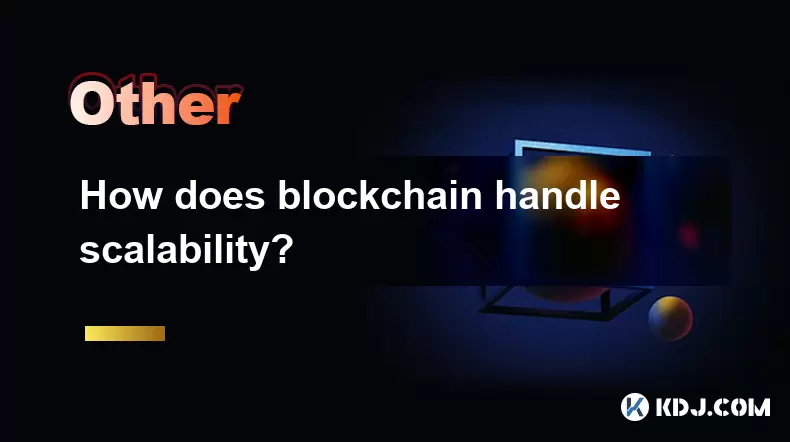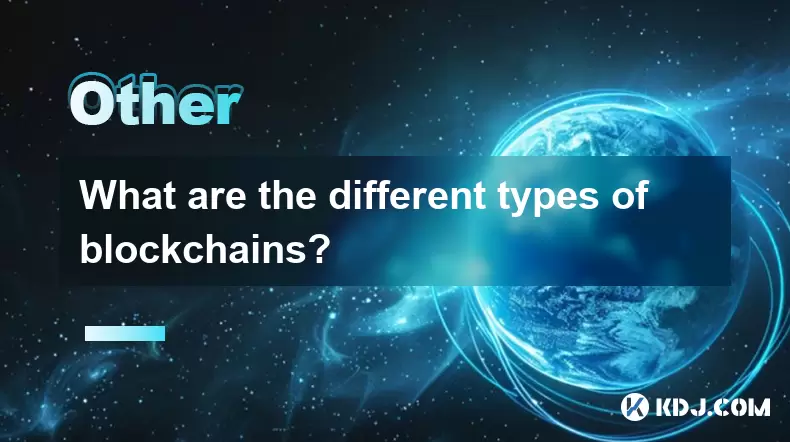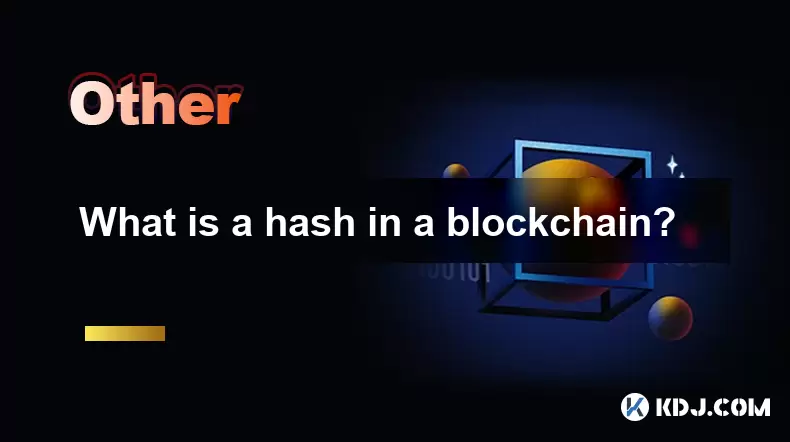-
 Bitcoin
Bitcoin $112400
-1.07% -
 Ethereum
Ethereum $3409
-3.27% -
 XRP
XRP $2.784
-6.60% -
 Tether USDt
Tether USDt $0.9997
-0.03% -
 BNB
BNB $739.3
-2.09% -
 Solana
Solana $158.0
-2.90% -
 USDC
USDC $0.9998
-0.02% -
 TRON
TRON $0.3213
-0.94% -
 Dogecoin
Dogecoin $0.1929
-5.01% -
 Cardano
Cardano $0.6974
-2.82% -
 Hyperliquid
Hyperliquid $36.69
-2.31% -
 Sui
Sui $3.327
-4.80% -
 Stellar
Stellar $0.3672
-5.18% -
 Chainlink
Chainlink $15.65
-3.07% -
 Bitcoin Cash
Bitcoin Cash $525.0
-1.68% -
 Hedera
Hedera $0.2291
-6.00% -
 Avalanche
Avalanche $20.91
-2.96% -
 Ethena USDe
Ethena USDe $1.000
0.00% -
 Toncoin
Toncoin $3.520
-1.12% -
 UNUS SED LEO
UNUS SED LEO $8.968
0.14% -
 Litecoin
Litecoin $105.7
0.26% -
 Shiba Inu
Shiba Inu $0.00001181
-1.79% -
 Polkadot
Polkadot $3.492
-2.08% -
 Uniswap
Uniswap $8.800
-3.10% -
 Dai
Dai $0.9999
-0.01% -
 Monero
Monero $289.9
-3.17% -
 Bitget Token
Bitget Token $4.243
-1.27% -
 Pepe
Pepe $0.00001006
-3.67% -
 Cronos
Cronos $0.1248
-5.68% -
 Aave
Aave $249.7
-2.50%
What is the consortium chain of blockchain? How is it different from the public chain?
Consortium chains offer a controlled blockchain environment for organizations, balancing decentralization with efficiency and privacy, ideal for industries requiring collaboration.
Apr 28, 2025 at 01:00 pm

The concept of the consortium chain in blockchain technology represents a unique approach to achieving the benefits of decentralized systems while maintaining a level of control and efficiency that is appealing to certain organizations and industries. Consortium chains are a type of blockchain where the consensus process is controlled by a pre-selected group of nodes, as opposed to a public chain, where anyone can participate in the consensus process. This article will delve into the intricacies of consortium chains, how they function, and how they differ from public chains.
Understanding the Consortium Chain
A consortium chain, also known as a federated blockchain, is a type of blockchain where the consensus process is controlled by a group of pre-selected nodes. These nodes are typically operated by different organizations that have a vested interest in the blockchain's operation. The key characteristic of a consortium chain is that it is neither fully public nor fully private. Instead, it occupies a middle ground, allowing only a select group of entities to participate in the validation and transaction process.
In a consortium chain, the governance and decision-making processes are shared among the participating members. This shared control can lead to more efficient and faster consensus mechanisms compared to public chains, which often struggle with scalability and speed due to their open nature. Consortium chains are often used in scenarios where multiple organizations need to collaborate on a shared platform but still require a certain level of privacy and control.
How Consortium Chains Work
The operation of a consortium chain revolves around the consensus mechanism, which is crucial for maintaining the integrity and security of the blockchain. In a consortium chain, the consensus mechanism is typically more streamlined than in public chains because the participants are known and trusted entities. Common consensus mechanisms used in consortium chains include Practical Byzantine Fault Tolerance (PBFT) and Raft.
Practical Byzantine Fault Tolerance (PBFT): This consensus mechanism is designed to handle failures and malicious actors within the network. In PBFT, nodes agree on the state of the blockchain through a series of voting rounds. If more than two-thirds of the nodes agree, the decision is considered final.
Raft: This is a simpler consensus algorithm that is easier to understand and implement. In Raft, nodes are divided into leaders and followers. The leader is responsible for managing the replication of logs to the followers, and if the leader fails, a new leader is elected.
The transaction validation process in a consortium chain is also more controlled. Only the pre-selected nodes can validate transactions, which can lead to faster transaction processing times and lower fees compared to public chains. Additionally, the privacy of transactions can be better managed, as the participating organizations can agree on what information is shared and what remains confidential.
Differences Between Consortium Chains and Public Chains
The primary difference between consortium chains and public chains lies in accessibility and control. Public chains, such as Bitcoin and Ethereum, are open to anyone who wants to participate. Anyone can join the network, validate transactions, and add new blocks to the chain. This openness fosters a high level of decentralization but can also lead to scalability issues and slower transaction times.
In contrast, consortium chains are restricted to a select group of participants. This restriction allows for more control over the network's operations and can lead to more efficient consensus mechanisms. Consortium chains are often favored by industries that require collaboration among multiple parties but also need to maintain certain privacy and governance standards.
Another key difference is in governance and decision-making. In public chains, governance is often decentralized and can be challenging to manage due to the diverse interests of participants. Consortium chains, on the other hand, have a more structured governance model, where decisions are made by the participating organizations. This can lead to more predictable and efficient operation of the blockchain.
Use Cases for Consortium Chains
Consortium chains are particularly well-suited for industries where multiple organizations need to collaborate but also require a level of privacy and control. Some common use cases include:
Supply Chain Management: Companies in a supply chain can use a consortium chain to track and verify the movement of goods. The blockchain can provide a transparent and immutable record of transactions, while still allowing participating companies to maintain control over their data.
Banking and Financial Services: Banks and financial institutions can use consortium chains to facilitate interbank transactions and settlements. The shared nature of the blockchain can reduce costs and increase efficiency, while the controlled access ensures compliance with regulatory requirements.
Healthcare: In the healthcare industry, a consortium chain can be used to securely share patient data among different healthcare providers. The blockchain can ensure the privacy and integrity of the data, while allowing only authorized parties to access it.
Government Services: Governments can use consortium chains to streamline services that involve multiple agencies. For example, a consortium chain can be used to manage land registries or to facilitate cross-border trade.
Advantages and Challenges of Consortium Chains
Consortium chains offer several advantages over public chains, including faster transaction times, lower costs, and improved privacy. The controlled nature of the network allows for more efficient consensus mechanisms and better management of transaction data.
However, consortium chains also face certain challenges. Scalability can still be an issue, although less so than in public chains. The need for consensus among multiple organizations can sometimes slow down decision-making processes. Additionally, trust among participating organizations is crucial, as the security of the network depends on the integrity of its members.
Implementing a Consortium Chain
Setting up a consortium chain involves several steps, which can be complex and require careful planning. Here is a detailed guide on how to implement a consortium chain:
Identify Participants: Determine which organizations will participate in the consortium. These should be entities that have a vested interest in the blockchain's success and can be trusted to operate nodes.
Define Governance Structure: Establish a governance model that outlines how decisions will be made and how the blockchain will be managed. This should include rules for adding or removing participants and resolving disputes.
Choose a Consensus Mechanism: Select a consensus mechanism that aligns with the needs of the consortium. PBFT and Raft are popular choices, but other mechanisms may be suitable depending on the specific requirements.
Select a Blockchain Platform: Choose a blockchain platform that supports consortium chains. Some popular options include Hyperledger Fabric, Corda, and Quorum.
Set Up Nodes: Each participating organization will need to set up and configure nodes on the network. This involves installing the necessary software and ensuring that the nodes are properly connected to the blockchain.
Develop Smart Contracts: Create smart contracts that define the rules and logic of the blockchain. These contracts should be tested thoroughly to ensure they function as intended.
Launch the Network: Once everything is set up, the network can be launched. This involves initializing the blockchain and starting the consensus process.
Monitor and Maintain: Continuously monitor the network to ensure it is functioning correctly. Regular maintenance and updates may be necessary to address any issues that arise.
Frequently Asked Questions
Q1: Can a consortium chain be converted into a public chain?
A: While it is theoretically possible to convert a consortium chain into a public chain, it would require significant changes to the network's governance and consensus mechanisms. The participating organizations would need to agree to open up the network to the public, and new consensus mechanisms would need to be implemented to handle the increased number of participants.
Q2: How do consortium chains handle regulatory compliance?
A: Consortium chains can be designed to meet specific regulatory requirements by implementing features such as permissioned access, data encryption, and audit trails. The participating organizations can work together to ensure that the blockchain complies with relevant laws and regulations.
Q3: What happens if a participant in a consortium chain acts maliciously?
A: Consortium chains have mechanisms in place to deal with malicious behavior. For example, the other participants can vote to remove a malicious node from the network. Additionally, the consensus mechanisms used in consortium chains, such as PBFT, are designed to handle a certain level of malicious activity without compromising the integrity of the blockchain.
Q4: Are consortium chains more secure than public chains?
A: Consortium chains can be more secure than public chains in certain aspects, such as resistance to 51% attacks, due to the controlled nature of the network. However, they may be vulnerable to insider threats if a participating organization acts maliciously. The overall security of a consortium chain depends on the integrity of its participants and the effectiveness of its governance and consensus mechanisms.
Disclaimer:info@kdj.com
The information provided is not trading advice. kdj.com does not assume any responsibility for any investments made based on the information provided in this article. Cryptocurrencies are highly volatile and it is highly recommended that you invest with caution after thorough research!
If you believe that the content used on this website infringes your copyright, please contact us immediately (info@kdj.com) and we will delete it promptly.
- Shiba Inu's Successor? Ruvi AI's ROI Forecast Turns Heads
- 2025-08-03 06:30:12
- Ruvi AI vs. Tron: Can AI Outpace the Crypto Giant on CoinMarketCap?
- 2025-08-03 07:10:12
- XRP ETF Hopes Fuel Altcoin Frenzy: Solana, Pi Coin, and the Next Big Thing
- 2025-08-03 07:10:12
- Price Prediction Palooza: Breakouts, Retests, and a Sprinkle of Crypto Magic
- 2025-08-03 06:35:12
- Ruvi AI: The AI Token on Cardano Set to Dominate After CMC Listing
- 2025-08-03 04:50:12
- Altcoins in the Spotlight: Cardano, Shiba Inu, and the Quest for Crypto Supremacy
- 2025-08-03 05:30:12
Related knowledge

What is the difference between on-chain and off-chain transactions?
Aug 02,2025 at 04:22pm
Understanding On-Chain TransactionsOn-chain transactions refer to digital asset transfers that are recorded directly on a blockchain ledger. These tra...

What is the double-spending problem and how does blockchain prevent it?
Aug 02,2025 at 01:07pm
Understanding the Double-Spending ProblemThe double-spending problem is a fundamental challenge in digital currency systems where the same digital tok...

What is the difference between a blockchain and a database?
Aug 01,2025 at 09:36pm
Understanding the Core Structure of a BlockchainA blockchain is a decentralized digital ledger that records data in a series of immutable blocks linke...

How does blockchain handle scalability?
Aug 02,2025 at 02:58pm
Understanding Blockchain Scalability ChallengesBlockchain scalability refers to a network's ability to handle an increasing volume of transactions wit...

What are the different types of blockchains?
Aug 03,2025 at 03:01am
Public Blockchains: Open and Decentralized NetworksPublic blockchains are the most widely recognized type of blockchain, characterized by their open a...

What is a hash in a blockchain?
Aug 02,2025 at 05:28am
Understanding the Concept of Hash in BlockchainA hash in the context of blockchain technology refers to a unique digital fingerprint generated by a cr...

What is the difference between on-chain and off-chain transactions?
Aug 02,2025 at 04:22pm
Understanding On-Chain TransactionsOn-chain transactions refer to digital asset transfers that are recorded directly on a blockchain ledger. These tra...

What is the double-spending problem and how does blockchain prevent it?
Aug 02,2025 at 01:07pm
Understanding the Double-Spending ProblemThe double-spending problem is a fundamental challenge in digital currency systems where the same digital tok...

What is the difference between a blockchain and a database?
Aug 01,2025 at 09:36pm
Understanding the Core Structure of a BlockchainA blockchain is a decentralized digital ledger that records data in a series of immutable blocks linke...

How does blockchain handle scalability?
Aug 02,2025 at 02:58pm
Understanding Blockchain Scalability ChallengesBlockchain scalability refers to a network's ability to handle an increasing volume of transactions wit...

What are the different types of blockchains?
Aug 03,2025 at 03:01am
Public Blockchains: Open and Decentralized NetworksPublic blockchains are the most widely recognized type of blockchain, characterized by their open a...

What is a hash in a blockchain?
Aug 02,2025 at 05:28am
Understanding the Concept of Hash in BlockchainA hash in the context of blockchain technology refers to a unique digital fingerprint generated by a cr...
See all articles

























































































